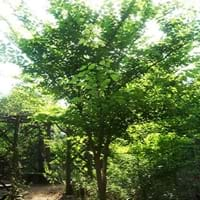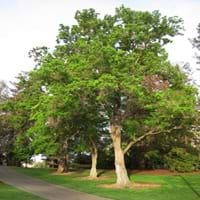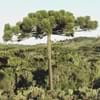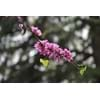Life Span
Perennial
Perennial
Origin
North America, Northeastern United States, Mid-Atlantic United States, North-Central United States, Central United States, South-Central United States, Canada
Eastern Asia, China
Types
Not Available
Candleberry tree
Habitat
Woodland Garden Canopy
Saline Soils, Upland, Upland soils
USDA Hardiness Zone
3-11
8-10
Sunset Zone
Not Available
H2, 8, 9, 12, 13, 14, 15, 16, 18, 19, 20, 21
Habit
Upright/Erect
Oval or Rounded
Minimum Height
Not Available
Flower Color
Tan, Sandy Brown
Yellow
Flower Color Modifier
Bicolor
Bicolor
Fruit Color
Green, Sandy Brown
White, Ivory
Leaf Color in Spring
Green
Green
Leaf Color in Summer
Green, Dark Green
Green
Leaf Color in Fall
Yellow, Green
Yellow, Red, Orange
Leaf Color in Winter
Not Available
Not Available
Leaf Shape
oblong or obovate
Heart-shaped
Plant Season
Not Available
Spring, Summer, Fall
Sunlight
Full Sun, Partial Sun, Partial shade
Full Sun
Type of Soil
Clay, Loam, Sand
Clay, Loam, Sand
The pH of Soil
Neutral, Alkaline
Acidic, Neutral, Alkaline
Soil Drainage
Average
Average
Bloom Time
Early Spring, Spring
Spring
Tolerances
Not Available
Cold climate, Drought, Pollution, Salt
Where to Plant?
Ground
Ground
How to Plant?
Seedlings
Grafting, Seedlings, Stem Planting, Transplanting
Plant Maintenance
Medium
Medium
Watering Requirements
Average Water Needs
Average Water Needs, Medium, Requires watering in the growing season
In Summer
Lots of watering
Lots of watering
In Spring
Moderate
Moderate
In Winter
Average Water
Average Water
Soil pH
Neutral, Alkaline
Acidic, Neutral, Alkaline
Soil Type
Clay, Loam, Sand
Clay, Loam, Sand
Soil Drainage Capacity
Average
Average
Sun Exposure
Full Sun, Partial Sun, Partial shade
Full Sun
Pruning
Remove damaged leaves, Remove dead branches, Remove dead leaves
Remove damaged leaves, Remove dead leaves, Remove dead or diseased plant parts, Remove deadheads
Fertilizers
Any balanced general purpose fertilizer
fertilize in growing season, Less fertilizing, Nitrogen
Pests and Diseases
Blackspot mold
Insects, Red blotch
Plant Tolerance
Drought
Cold climate, Drought, Salt
Flowers
Insignificant
Insignificant
Flower Petal Number
Not Available
Single
Showy Foliage
Insignificant
No
Foliage Texture
Medium
Medium
Foliage Sheen
Matte
Matte
Attracts
Beetles, Birds
Not Available
Allergy
Miscarriage, Rash
Nausea, Toxic, Vomiting
Aesthetic Uses
Not Used For Aesthetic Purpose
Landscape Designing
Beauty Benefits
Beautiful Skin, Heals Damaged Hair, Strong, beautiful hair
No Beauty Benefits
Environmental Uses
Air purification
Absorbs greenhouse gases, Absorbs huge amounts of CO2, Air purification, Amazing growth rate, Erosion control, Food for insects, Forms dense stands, Nesting sites for birds, No fertilizer, pesticides, or herbicides needed, Prevent Soil Erosion, Shadow Tree, Shelter for wildlife, Soil protection, soil stabilisation, Used to establish native woodland, Very little waste, Wildlife, Windbreak
Medicinal Uses
Demulcent, Diuretic, Expectorant, Nutritive
Boils
Part of Plant Used
Fruits, Inner Bark, Leaves
Fruits, Leaves, Seeds
Other Uses
Chewed as a thirst quencher, Tea-like beverage can be brewed, Used as a thickener in soups, Used to make a twine
Employed in herbal medicine, Showy Purposes, Used as firewood, Used for its medicinal properties
Used As Indoor Plant
No
No
Used As Outdoor Plant
Yes
Yes
Garden Design
Shade Trees
Feature Plant, Shade Trees, Street Trees
Botanical Name
ULMUS rubra
TRIADICA sebifera
Common Name
Slippery Elm
Chinese Tallow
In Hindi
Slippery Elm
चीनी तेल
In German
Rotulme
chinesisch Talg
In French
Slippery Elm
chinesisch Talg
In Spanish
olmo resbaladizo
suif chinois
In Greek
Slippery Elm
κινέζικο ζωικό λίπος
In Portuguese
Slippery Elm
sebo chinesa
In Polish
Slippery Elm
chiński łój
In Latin
Lubricus Elm
Chinese adipe
Phylum
Magnoliophyta
Embryophyta
Class
Magnoliopsida
Magnoliopsida
Order
Urticales
Malpighiales
Family
Ulmaceae
Euphorbiaceae
Clade
Angiosperms, Eudicots, Rosids
Angiosperms, Eudicots, Rosids
Tribe
Not Available
Hippomaneae
Subfamily
Not Available
Euphorbioideae
Number of Species
Not Available
Not Available
Season and Care of Slippery Elm and Chinese Tallow
Season and care of Slippery Elm and Chinese Tallow is important to know. While considering everything about Slippery Elm and Chinese Tallow Care, growing season is an essential factor. Slippery Elm season is Not Available and Chinese Tallow season is Not Available. The type of soil for Slippery Elm is Clay, Loam, Sand and for Chinese Tallow is Clay, Loam, Sand while the PH of soil for Slippery Elm is Neutral, Alkaline and for Chinese Tallow is Acidic, Neutral, Alkaline.
Slippery Elm and Chinese Tallow Physical Information
Slippery Elm and Chinese Tallow physical information is very important for comparison. Slippery Elm height is 1,830.00 cm and width Not Available whereas Chinese Tallow height is Not Available and width Not Available. The color specification of Slippery Elm and Chinese Tallow are as follows:
Slippery Elm flower color: Tan and Sandy Brown
Slippery Elm leaf color: Green
Chinese Tallow flower color: Yellow
- Chinese Tallow leaf color: Green
Care of Slippery Elm and Chinese Tallow
Care of Slippery Elm and Chinese Tallow include pruning, fertilizers, watering etc. Slippery Elm pruning is done Remove damaged leaves, Remove dead branches and Remove dead leaves and Chinese Tallow pruning is done Remove damaged leaves, Remove dead leaves, Remove dead or diseased plant parts and Remove deadheads. In summer Slippery Elm needs Lots of watering and in winter, it needs Average Water. Whereas, in summer Chinese Tallow needs Lots of watering and in winter, it needs Average Water.





